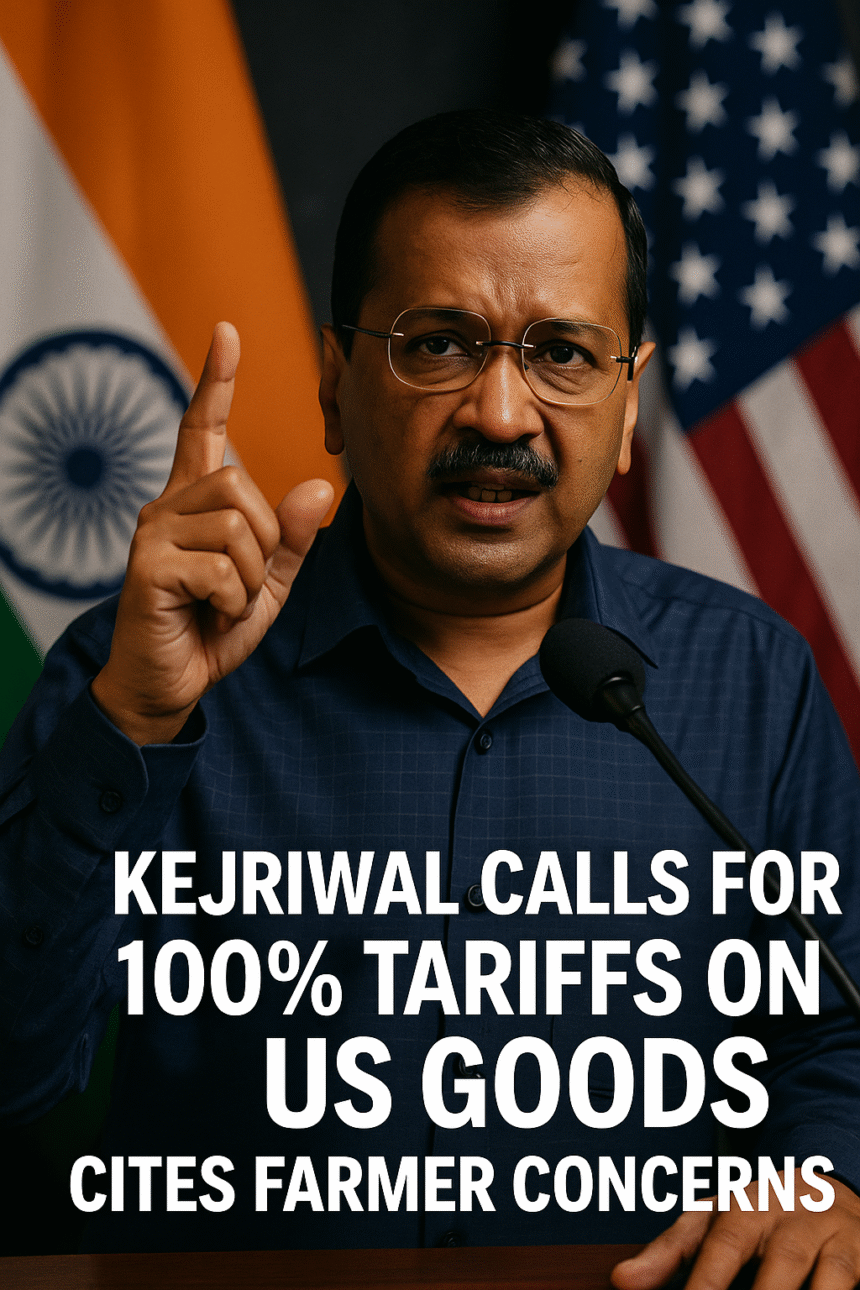analysisWe need to craft article 1000-1500 words in news style: headings h2 sections (3-4 sections). Structure: Lead paragraph, Background/Context, Key Developments, Impact Analysis, Expert Insights/Tips, Looking Ahead. Then conclusion CTA: “Reach out to us for personalized consultation based on your specific requirements.” Ensure no
, include
Background
India’s trade relationship with the United States has been on a roller‑coaster for decades. While the two economies share strong sectoral linkages – a $170 billion trade volume in 2023 – a flood of protectionist spikes on both sides has repeatedly strained the partnership. In June, the U.S. imposed a 50 % duty on Indian sugar, dairy and palm oil, citing unfair subsidy practices. India, in turn, lifted an 11 % import duty on American cotton in August to support its textile exporters facing the US tariff wave. Kejriwal’s call for a 100 % counter‑tariff is intended as a retaliatory gesture and a show of national resolve.
Key Developments
US tariffs on Indian goods have rapidly expanded since the Trump administration’s “America First” trade policies. On 12 August, the U.S. Department of Commerce categorized 190 goods as subject to a 50 % tariff. Examples include manufactured goods, dairy products, and packaged foods. The Indian government, citing the impact on farmers and the food supply chain, removed the 11 % duty on American cotton, allowing duty‑free imports until 31 December. Kejriwal highlighted that this shift means American cotton will be roughly ₹15–20 cheaper per kilogram than domestically produced cotton, putting Indian growers at a competitive disadvantage.
The AAP leader’s remarks include a sharp critique of Prime Minister Narendra Modi, who is accused of acting behind the “back of our farmers” in deciding to drop the cotton duty. “If Trump has imposed a 50 % tariff on Indian goods, we should have imposed a 100 % tariff on American goods,” Kejriwal declared. He called Trump a coward for bowing to American pressure and suggested that the country should adopt its own aggressive trade measures to counter what it perceives as “unjustified and unreasonable” U.S. actions.
White House trade adviser Peter Navarro, who has tied India’s oil imports to the Ukraine war, has labelled the tariff escalation as an “unfair war” and warned that the only way for India to safeguard national interests is to respond with equally potent measures.
- US tariff list: 190 goods, 50 % duty
- Indian response: removal of 11 % duty on American cotton
- Kejriwal’s stance: 100 % counter‑tariff demand against US goods
Impact Analysis
The ramifications of this trade standoff ripple across multiple tiers of the Indian economy. For the textile sector, cheaper American cotton eases production costs for exporters but increases competitive pressure on farmers whose output is priced lower. The retail and manufacturing industries that import raw materials face a cost surge, prompting a likely rise in consumer prices.
Students and young professionals looking to work abroad or pursue higher education outside India should be wary of the potential ripple effects. Higher tariffs increase the cost of goods and services, which may lead to inflationary pressures that can affect living costs for international students. Moreover, as the U.S. ramps up its trade restrictions, diplomatic tensions could slow visa processing times and complicate contractual arrangements for internships and research collaborations.
Entrepreneurs in the import-export space will see a shift in market dynamics. A 100 % tariff would dramatically increase the landed cost of American products, creating a niche for domestic substitutes. Small and medium enterprises (SMEs) might recalibrate supply chains in anticipation of sudden price hikes.
Expert Insights & Practical Tips
According to trade analyst Dr. Maya Nayar, “A 100 % counter‑tariff is unlikely to be sustainable long‑term. Tariff wars tend to provoke retaliatory measures on both sides, eventually eroding the competitive advantage of both economies.” She advises businesses to diversify their supplier base and explore alternative markets, such as the EU, Japan, and ASEAN economies.
What does this mean for students and aspiring professionals?
- Know Your Rights: Should visa delays arise due to trade disputes, students should stay informed about the U.S. Department of State’s higher education policies and seek assistance from university international student offices.
- Financial Planning: Inflationary spikes can affect international expenses. It’s wise to maintain a buffer fund and monitor the Consumer Price Index (CPI) for higher‑education cost forecasts.
- Skill Diversification: Proficiency in sectors that are less export‑dependent, such as digital services or software engineering, can mitigate the impact of trade tariffs on job prospects abroad.
- Stay Updated: Follow reputable news outlets and government advisories for real‑time updates on tariff changes. Understanding the US tariffs on Indian goods timeline helps in strategic decision‑making.
- Contact Your Embassy: When traveling for study or work, keep your Indian embassy’s contact information handy in case of emergencies related to trade sanctions or visa issues.
Looking Ahead
The trade spat between New Delhi and Washington is far from over. Prime Minister Modi’s government is expected to announce a new tariff framework by early September, potentially targeting specific U.S. exports. Meanwhile, the United States might intensify its tariff list if India fails to take a reciprocal stance. Analysts predict that if the US were to impose a 100 % tariff on American goods, it would drastically reduce U.S. exports to India, prompting retaliatory actions from other global partners.
Diplomatic mediation efforts are underway, with the World Trade Organization (WTO) and bilateral talks slated to explore long‑term trade solutions. International bodies like the International Monetary Fund may step in to stabilize currencies and mitigate inflation triggers.
In the interim, students and budding professionals should remain vigilant, diversify their skill sets, and keep abreast of both government and industry developments. Understanding the intricacies of trade policy will equip them to navigate potential disruptions in educational pathways, employment prospects, and cross‑border collaborations.
Reach out to us for personalized consultation based on your specific requirements.

